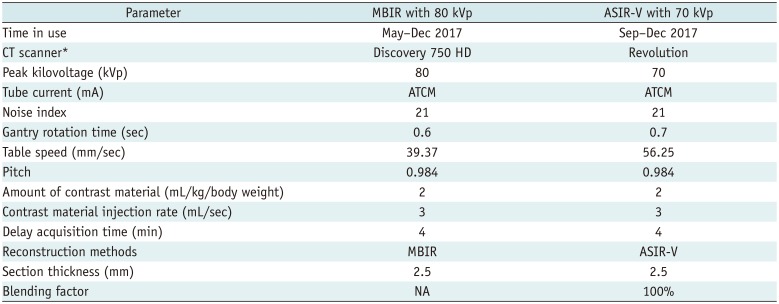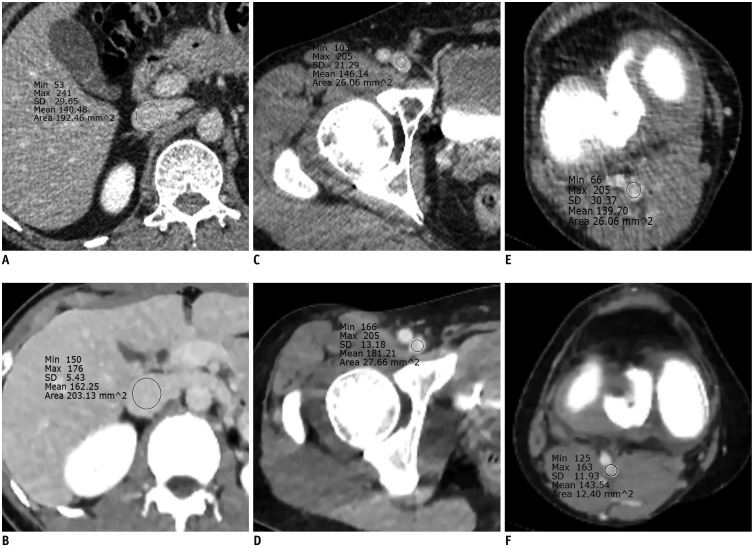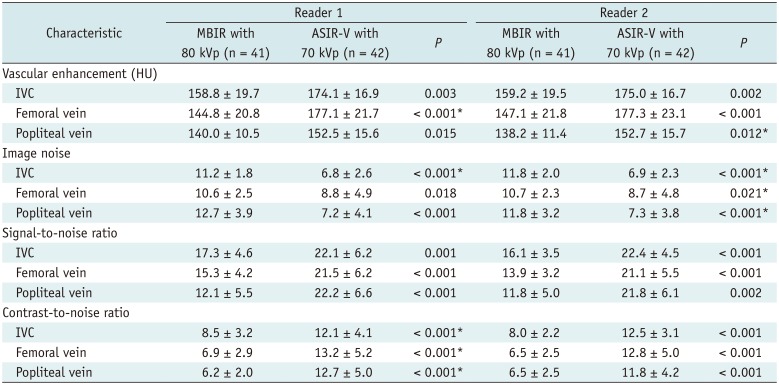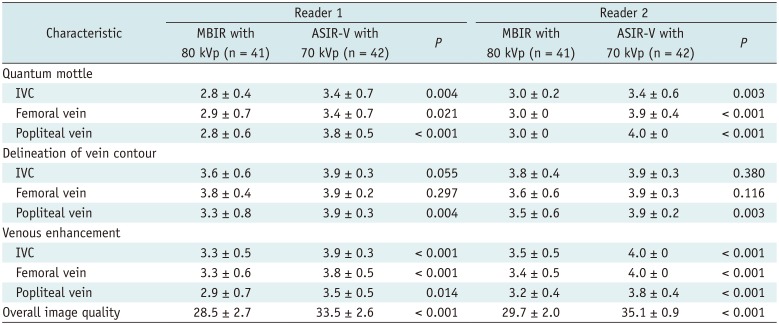1. Raskob GE, Angchaisuksiri P, Blanco AN, Buller H, Gallus A, Hunt BJ, et al. ISTH Steering Committee for World Thrombosis Day. Thrombosis: a major contributor to global disease burden. Arterioscler Thromb Vasc Biol. 2014; 34:2363–2371. PMID:
25304324.

2. Huang W, Goldberg RJ, Anderson FA, Kiefe CI, Spencer FA. Secular trends in occurrence of acute venous thromboembolism: the Worcester VTE study (1985-2009). Am J Med. 2014; 127:829–839.e5. PMID:
24813864.

3. White RH. The epidemiology of venous thromboembolism. Circulation. 2003; 107(23 Suppl 1):I4–I8. PMID:
12814979.

4. Di Nisio M, van Es N, Büller HR. Deep vein thrombosis and pulmonary embolism. Lancet. 2016; 388:3060–3073. PMID:
27375038.

5. Bernardi E, Camporese G, Büller HR, Siragusa S, Imberti D, Berchio A, et al. Erasmus Study Group. Serial 2-point ultrasonography plus D-dimer vs whole-leg color-coded Doppler ultrasonography for diagnosing suspected symptomatic deep vein thrombosis: a randomized controlled trial. JAMA. 2008; 300:1653–1659. PMID:
18840838.
6. Liu D, Peterson E, Dooner J, Baerlocher M, Zypchen L, Gagnon J, et al. Interdisciplinary Expert Panel on Iliofemoral Deep Vein Thrombosis (InterEPID). Diagnosis and management of iliofemoral deep vein thrombosis: clinical practice guideline. CMAJ. 2015; 187:1288–1296. PMID:
26416989.

7. Sasaki T, Fujimoto Y, Ishitoya S, Nabaa B, Watanabe N, Yamaki T, et al. Improved detectability of thromboses of the lower limb using low kilovoltage computed tomography. Medicine (Baltimore). 2018; 97:e9775. PMID:
29419670.

8. Jeong YJ, Choo KS, Nam KJ, Lee JW, Kim JY, Jung HJ, et al. Image quality and radiation dose of CT venography with double dose reduction using model based iterative reconstruction: comparison with conventional CT venography using filtered back projection. Acta Radiol. 2018; 59:546–552. PMID:
28766981.

9. Kim JH, Choo KS, Moon TY, Lee JW, Jeon UB, Kim TU, et al. Comparison of the image qualities of filtered back-projection, adaptive statistical iterative reconstruction, and model-based iterative reconstruction for CT venography at 80 kVp. Eur Radiol. 2016; 26:2055–2063. PMID:
26486938.

10. Cho ES, Chung JJ, Kim S, Kim JH, Yu JS, Yoon CS. CT venography for deep vein thrombosis using a low tube voltage (100 kVp) setting could increase venous enhancement and reduce the amount of administered iodine. Korean J Radiol. 2013; 14:183–193. PMID:
23482914.

11. Park CK, Choo KS, Jeon UB, Baik SK, Kim YW, Kim TU, et al. Image quality and radiation dose of 128-slice dual-source CT venography using low kilovoltage combined with high-pitch scanning and automatic tube current modulation. Int J Cardiovasc Imaging. 2013; 29(Suppl 1):47–51. PMID:
23748369.

12. Oda S, Utsunomiya D, Funama Y, Shimonobo T, Namimoto T, Itatani R, et al. Evaluation of deep vein thrombosis with reduced radiation and contrast material dose at computed tomography venography: clinical application of a combined iterative reconstruction and low-tube-voltage technique. Circ J. 2012; 76:2614–2622. PMID:
22784997.
13. Kulkarni NM, Sahani DV, Desai GS, Kalva SP. Indirect computed tomography venography of the lower extremities using single-source dual-energy computed tomography: advantage of low-kiloelectron volt monochromatic images. J Vasc Interv Radiol. 2012; 23:879–886. PMID:
22633619.

14. Oda S, Utsunomiya D, Awai K, Takaoka H, Nakaura T, Katahira K, et al. Indirect computed tomography venography with a low-tube-voltage technique: reduction in the radiation and contrast material dose--a prospective randomized study. J Comput Assist Tomogr. 2011; 35:631–636. PMID:
21926861.
15. Fujikawa A, Matsuoka S, Kuramochi K, Yoshikawa T, Yagihashi K, Kurihara Y, et al. Vascular enhancement and image quality of CT venography: comparison of standard and low kilovoltage settings. AJR Am J Roentgenol. 2011; 197:838–843. PMID:
21940570.

16. Matsuoka S, Hunsaker AR, Gill RR, Oliva IB, Trotman-Dickenson B, Jacobson FL, et al. Vascular enhancement and image quality of MDCT pulmonary angiography in 400 cases: comparison of standard and low kilovoltage settings. AJR Am J Roentgenol. 2009; 192:1651–1656. PMID:
19457830.

17. Pontone G, Muscogiuri G, Andreini D, Guaricci AI, Guglielmo M, Baggiano A, et al. Impact of a new adaptive statistical iterative reconstruction (ASIR)-V algorithm on image quality in coronary computed tomography angiography. Acad Radiol. 2018; 25:1305–1313. PMID:
29602723.

18. Goodenberger MH, Wagner-Bartak NA, Gupta S, Liu X, Yap RQ, Sun J, et al. Computed tomography image quality evaluation of a new iterative reconstruction algorithm in the abdomen (adaptive statistical iterative reconstruction-V) a comparison with model-based iterative reconstruction, adaptive statistical iterative reconstruction, and filtered back projection reconstructions. J Comput Assist Tomogr. 2018; 42:184–190. PMID:
28806318.

19. Kim HG, Lee HJ, Lee SK, Kim HJ, Kim MJ. Head CT: image quality improvement with ASIR-V using a reduced radiation dose protocol for children. Eur Radiol. 2017; 27:3609–3617. PMID:
28116512.

20. Lee S, Kwon H, Cho J. The detection of focal liver lesions using abdominal CT: a comparison of image quality between adaptive statistical iterative reconstruction V and adaptive statistical iterative reconstruction. Acad Radiol. 2016; 23:1532–1538. PMID:
27745816.

21. Kwon H, Cho J, Oh J, Kim D, Cho J, Kim S, et al. The adaptive statistical iterative reconstruction-V technique for radiation dose reduction in abdominal CT: comparison with the adaptive statistical iterative reconstruction technique. Br J Radiol. 2015; 88:20150463. PMID:
26234823.

22. Cham MD, Yankelevitz DF, Shaham D, Shah AA, Sherman L, Lewis A, et al. The Pulmonary Angiography-Indirect CT Venography Cooperative Group. Deep venous thrombosis: detection by using indirect CT venography. Radiology. 2000; 216:744–751. PMID:
10966705.

23. Landis JR, Koch GG. The measurement of observer agreement for categorical data. Biometrics. 1977; 33:159–174. PMID:
843571.

24. Sagara Y, Hara AK, Pavlicek W, Silva AC, Paden RG, Wu Q. Abdominal CT: comparison of low-dose CT with adaptive statistical iterative reconstruction and routine-dose CT with filtered back projection in 53 patients. AJR Am J Roentgenol. 2010; 195:713–719. PMID:
20729451.

25. Hussain FA, Mail N, Shamy AM, Suliman A, Saoudi A. A qualitative and quantitative analysis of radiation dose and image quality of computed tomography images using adaptive statistical iterative reconstruction. J Appl Clin Med Phys. 2016; 17:419–432. PMID:
27167261.

26. Brady SL, Moore BM, Yee BS, Kaufman RA. Pediatric CT: implementation of ASIR for substantial radiation dose reduction while maintaining pre-ASIR image noise. Radiology. 2014; 270:223–231. PMID:
23901128.

27. Kim HG, Chung YE, Lee YH, Choi JY, Park MS, Kim MJ, et al. Quantitative analysis of the effect of iterative reconstruction using a phantom: determining the appropriate blending percentage. Yonsei Med J. 2015; 56:253–261. PMID:
25510772.

28. Annoni AD, Andreini D, Pontone G, Formenti A, Petullà M, Consiglio E, et al. Ultra-low-dose CT for left atrium and pulmonary veins imaging using new model-based iterative reconstruction algorithm. Eur Heart J Cardiovasc Imaging. 2015; 16:1366–1373. PMID:
25911117.

29. Smith EA, Dillman JR, Goodsitt MM, Christodoulou EG, Keshavarzi N, Strouse PJ. Model-based iterative reconstruction: effect on patient radiation dose and image quality in pediatric body CT. Radiology. 2014; 270:526–534. PMID:
24091359.

30. Yasaka K, Katsura M, Hanaoka S, Sato J, Ohtomo K. High-resolution CT with new model-based iterative reconstruction with resolution preference algorithm in evaluations of lung nodules: comparison with conventional model-based iterative reconstruction and adaptive statistical iterative reconstruction. Eur J Radiol. 2016; 85:599–606. PMID:
26860673.

31. Deák Z, Grimm JM, Treitl M, Geyer LL, Linsenmaier U, Körner M, et al. Filtered back projection, adaptive statistical iterative reconstruction, and a model-based iterative reconstruction in abdominal CT: an experimental clinical study. Radiology. 2013; 266:197–206. PMID:
23169793.

32. Tang H, Yu N, Jia Y, Yu Y, Duan H, Han D, et al. Assessment of noise reduction potential and image quality improvement of a new generation adaptive statistical iterative reconstruction (ASIR-V) in chest CT. Br J Radiol. 2018; 91:20170521. PMID:
29076347.

33. Benz DC, Gräni C, Mikulicic F, Vontobel J, Fuchs TA, Possner M, et al. Adaptive statistical iterative reconstruction-V: impact on image quality in ultralow-dose coronary computed tomography angiography. J Comput Assist Tomogr. 2016; 40:958–963. PMID:
27560012.
34. Waaijer A, Prokop M, Velthuis BK, Bakker CJ, de Kort GA, van Leeuwen MS. Circle of Willis at CT angiography: dose reduction and image quality--reducing tube voltage and increasing tube current settings. Radiology. 2007; 242:832–839. PMID:
17229873.

35. Huda W, Scalzetti EM, Levin G. Technique factors and image quality as functions of patient weight at abdominal CT. Radiology. 2000; 217:430–435. PMID:
11058640.

36. Kondratyev E, Karmazanovsky G. Low radiation dose 256-MDCT angiography of the carotid arteries: effect of hybrid iterative reconstruction technique on noise, artifacts, and image quality. Eur J Radiol. 2013; 82:2233–2239. PMID:
24094643.

37. Curry TS, Dowdey JE, Murry RC. Basic interactions between X-rays and matter. In : Curry TS, Dowdey JE, Murry RC, editors. Christensen's physics of diagnostic radiology. 4th ed. Philadelphia, PA: Lippincott Williams & Wilkins;1990. p. 61–69.
38. Douketis JD, Crowther MA, Foster GA, Ginsberg JS. Does the location of thrombosis determine the risk of disease recurrence in patients with proximal deep vein thrombosis? Am J Med. 2001; 110:515–519. PMID:
11343664.









 PDF
PDF ePub
ePub Citation
Citation Print
Print



 XML Download
XML Download